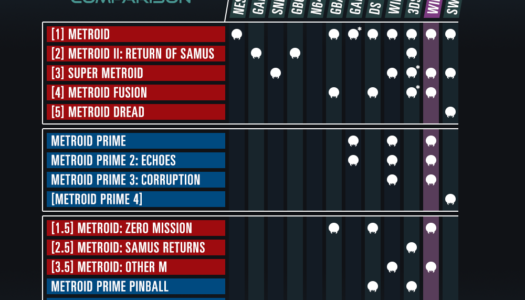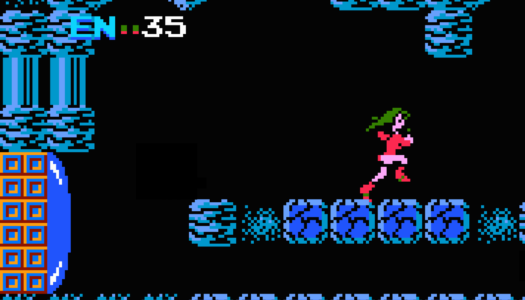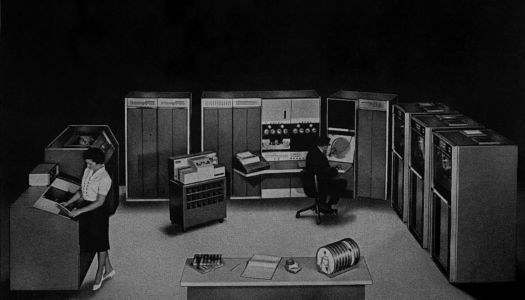Brink (2P Review)

Publisher: Bethesda / Developer: Splash Damage / Platform: PC, PS3, Xbox 360
Kate: Brink is a multiplayer first-person-shooter that touts a high degree of character customization, a parkour-inspired movement system, and a set of team classes that put emphasis on teamwork and team strategy. In April, Bethesda pushed the release date up a week, stating that production on the game had already wrapped.
This claim has come to seem a little questionable to some, after a release week that involved not one but two patches to fix major issues, and some areas of the game still feeling incomplete or unfinished. It seems that developer Splash Damage focused so much on the aspects of the game that would make it unique (the aforementioned character customization, parkour-inspired movement, and team classes), that they failed to devote enough time to establishing a solid foundation on which to put it all.
But that’s not to say this game isn’t worth your time. Despite several issues, we’ve been generally enjoying the game quite a bit. So before getting into all the things that could’ve been better, let’s talk a little about what they did right. What have you been liking about the game so far, James?
James: I really, really enjoy Brink. I’m a big fan of customization so all the clothing and weapon choices really delighted me. Clothing (thankfully) has no statistical impact on your character other than his body type (which we’ll get into later), but the many weapons to choose from and attachments to customize them with really surprised me. Stat junkies like myself will enjoy tinkering with the many rifles, sub machine guns, shotguns and pistols in order to make a weapon that suits a specific play style, and finding your favorite class and body type combination is exciting.
Another thing I really liked was the emphasis on teamwork. Even if you have a pretty firm grasp on how to play Brink, if you go out alone you’ll quickly find yourself staring at a respawn timer. Each team is made up of a number of Medics, Engineers, Soldiers and Operatives, all of which play their own role. Medics can heal and revive team members, Engineers can build turrets and place mines (and seem to have the majority of important class-specific objectives in the Campaign), Soldiers can give extra ammunition and carry explosives, and Operatives can hack turrets and disguise themselves as an enemy.
A team is never really complete without a good mix of each class, as each of them has their own class-specific buffs to give to team members and each mission will have objectives that only a specific class can complete. This really gives each player a sense that they are doing something for the team. However, when playing solo this emphasis on teamwork is ultimately what makes the offline play such a disappointment.
Kate: Like you said, I too really like how different classes can buff other teammates in different ways. That and the the general unique class-specific abilities greatly contribute to the feeling of being a team, rather than a bunch of solo players each trying to accomplish the same goal separately.
Where this falls apart in solo mode specifically is that the friendly AI is just dumb. Almost game-breakingly dumb. The AI aren’t going to finish any of the objectives for you, so you have to switch to whichever class is required for the task and do it yourself. And any task the requires your team covering you or holding back the enemy long enough for you to complete it becomes an exercise in frustration. Even just having one other human player helping you out makes the levels infinitely more fun (or maybe I should say any fun at all).
James: Here’s the thing that frustrates me, though: it seems like only the allied AI is insultingly stupid. The enemy AI moves—for the most part—en masse. However, this usually works for it because they’ll all just cluster around the objective, place turrets and mines everywhere and generally make it near impossible to get to where you need to be. The friendly AI, however, likes to spread itself out and get killed a lot and occasionally remember what they’re supposed to be doing. Medics will alternate between running blindly through enemy fire to revive one person, or healing only themselves when you’re laying right next to them, dead on the ground. The enemy AI does have its own moments of stupidity and there are times when the friendly AI will do something right, but for the most part it just feels like any non-human team members have just been replaced with sheep wielding machine guns.
Kate: While we’re on the topic of solo play, let’s talk about the story a little (non-spoiler version). It’s hard for me not to make comparisons between this and Valve games, when part of what appealed to me about Brink was the idea of Team Fortress 2-style teamwork (with classes including a turret-laying Engineer, a Medic, and an Operative class that’s essentially the Spy). So when Splash Damage mentioned that multiplayer and campaign would be one and the same, with the story integrated into the multiplayer, my first thought was how Left 4 Dead accomplished storytelling in a multiplayer co-op setting.
Unfortunately, it turns out Splash Damage’s idea of integrating story with multiplayer was simply to add cutscenes in between levels. I still give them points for trying to add story into a multiplayer game, at least, but it’s disappointing they didn’t try integrating things a little more. Since campaign mode is essentially co-op (with up to eight people) anyways, doing it Valve style could’ve worked pretty well, and Freemode (where teams play against each other) doesn’t really need a story anyways. Can you imagine having to skip a cutscene every time you played a level in Team Fortress 2?
I also give them points for coming up with a story that isn’t just good vs. evil, even if the execution leaves something to be desired. After playing the story mode for both sides, you come to realize that neither side is right or wrong (as much as they’re convinced the other side is evil). The story is filled with shades of gray, and the characters aren’t always being told the truth by the leaders on their own side.
Unfortunately, this potentially interesting story is undermined by storytelling that tries for cinematic, but instead comes across as hammy and melodramatic. I felt like I was watching a stage play acted out in different non-stage settings, rather than real people having a conversation.
Back to the topic of cutscenes instead of Valve-style integration, this problem also extends to teaching you how to play the game. Brink asks you to watch training videos—even bribing you with with 1,000XP if you’ll even just watch the first one—which are never as effective as teaching you how to play while you’re playing, as Valve is well-known for doing. In fact, the levels Brink has labeled as Challenges do a far better job of teaching you how to play than the training videos; they should have named the 1-star challenges “Training” and asked you to play through those (or even just the “Be More Objective” challenge) for 1,000XP.
James: Yeah, the Challenges do a good job of getting you used to the way the game is played and each of them focus on different aspects, which I thought was pretty neat. One thing I found disappointingly absent, however, was some sort of “Firing Range” mode. There’s such an emphasis on tweaking and customizing your weapons, but there really isn’t any quick way to go and see what impact the changes you’ve made had on your gun other than going into a Challenge and shooting at the first few guys you see. This wasn’t a huge problem, but it would’ve been nice to have something like that to just play around with the different weapons.
Kate: I hadn’t even thought of that, but that would definitely make tweaking the guns easier than just guessing based on the changes to the stat bars.
I have a laundry list of functional additions or changes I would’ve liked to have seen in the game. I found myself really missing the “killed by” cam a la Team Fortress 2, or even one done in the style of Call Of Duty. I also think the HUD could have used some simplifying; it serves its purpose, and you get used to it, but it looks busy and cluttered compared to most modern shooters (or, again, Team Fortress 2). And the lack of a matchmaking lobby—kind of a standard feature nowadays—is a little unsettling.
Also, while the character customization is overall a fun addition, there are some improvements I’d like to see there as well. And I’m not just talking about the lack of a gender option, which I already talked about in length here. So I’m not going say much about that here, other than to add that it seems a little silly to make allusions in the story to the biblical Ark—which contained a female for every male—in a world that doesn’t appear to have any women, beyond the disembodied voice that narrates the training videos and intro. There’s even a line in the game where one Resistance character asks, “what about your family?,” and the other responds: “My kids? A father provides…he provides a future. That’s what I’m doing here!” He never mentions a wife. Perhaps this is a world where men finally realized how to reproduce without women? I’ll leave someone else to wonder about the potential sexual implications.
But beyond that, my main character creation complaint is that certain aspects of your character are permanent and cannot be modified later. These include your character’s face type (you pick from a list of them rather than creating your own) and voice, and any scars or tattoos you decide to add at any point. It’s especially frustrating when you’re playing the game for the first time, and the very first thing it asks you to do is create your character and make some of these decisions immediately, when you might decide you wanted a different look once you’ve played awhile. I just don’t understand why they wouldn’t let you change things later?
And somewhat related to that, you’re also not able to look at and equip any new clothing items you’ve unlocked during play, without backing out of the game. Another place where having some sort of lobby might’ve been nice (even if you have to view the items on a timer before the next match, a la Blur).
This is a game that’s a lot of fun, but feels a little unfinished. It has a great deal of potential to be something more, but I need to rate it on what it currently is, and not on what is has the potential to be. I give Brink a 7/10.
James: My biggest problem with Brink is that they spent so much time getting some really unique things to work really well, but they made some really odd decisions here and there, and some of the most basic things really don’t work that well at all. Like Kate said, not being able to change your face, tattoos or voice later on in the game just seems silly, especially since there seems to be some glitch that automatically sets the voice of any characters you make later to that of your first character. With such an emphasis on customization it just seems strange there there are a handful of specific things you can’t change. Also when you first start a character, you get to choose which side you want him to fight for. What they don’t tell you is that this choice makes no difference whatsoever. You can still customize what your character looks like on the Security and Resistance teams, and you can still play either side of the Campaign in any order you want. All it really does is add some initial confusion when you start the game for the first time.
Another small yet frustrating problem is the context-sensitivity of class abilities. If you want to buff a team member, you walk up to them and hold X. This works in theory but sometimes the game doesn’t do quite what you want it to. For instance, I usually play a Medic. There have been multiple occasions where I’ll run over to a downed team member to revive them, only to have the game decide I want to buff another team member’s health, and my character will automatically turn around and follow that team member rather than toss a revive syringe to the person I was facing. This happens more often than it should, unfortunately.
As of writing this review, Public multiplayer games are—for the most part—practically unplayable. Playing a private game with some friends works near-flawlessly and is incredibly fun, but once you try and make the jump to a full game with all human players, the lag slows the game down to a crawl and it becomes impossible to walk down a hallway, let alone finish an objective. Since purchasing the game I’ve gotten into two lag-free matches, and those worked perfectly and were a lot of fun. It is just disappointing that finding a playable match is so hard to actually do.
I like Brink. If you can find even one friend to play with, the annoyingly inconsistent AI becomes bearable and its fun to communicate and work together towards the objective. Character and weapon customization is fun and detailed, and the free-running aspect is something you’ll come to miss in other shooters. It’s just unfortunate that Splash Damage dropped the ball on some really obvious things. 8/10.
















